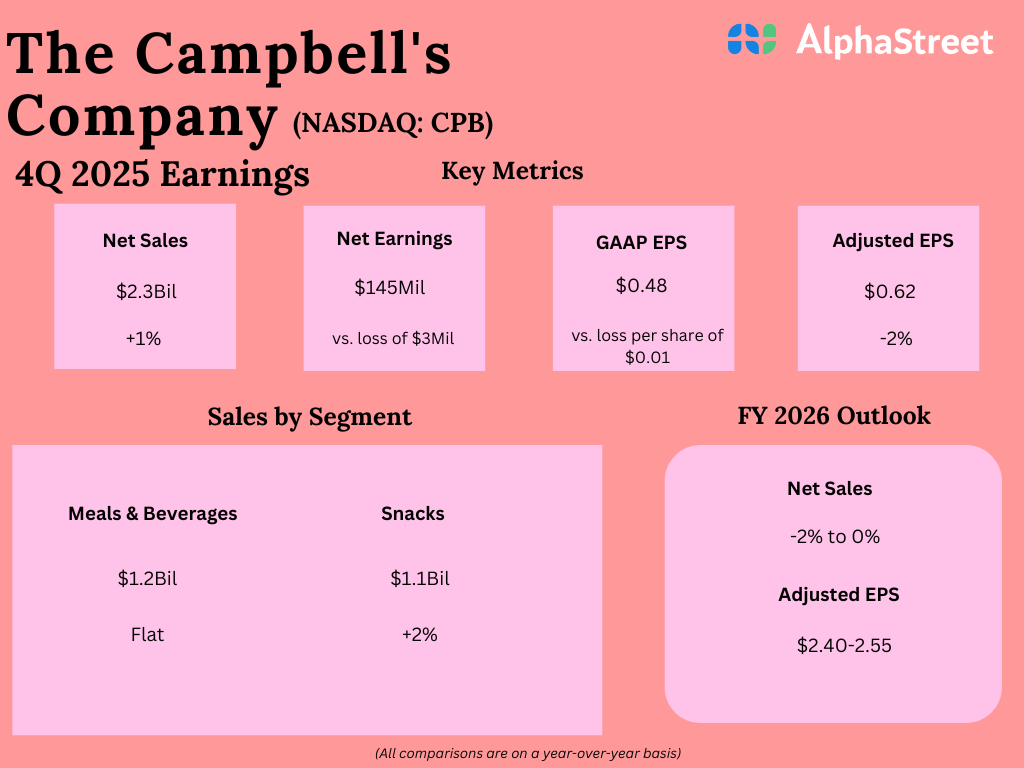Spreadsheet data updated daily
Spreadsheet and Top 5 List Updated on November 28th, 2025 by Bob Ciura
The communication services sector has a lot to offer investors, particularly those looking for higher investment income.
Many communication services stocks generate strong profits and cash flow, which allow them to pay high dividend yields to shareholders.
And, the major communication services stocks broadly have lower valuations than many other market sectors, making them appealing for value investors as well.
With this in mind, we created a list of 23 communication services stocks.
You can download the list (along with important financial ratios such as dividend yields and payout ratios) by clicking on the link below:

Keep reading this article to learn more about the benefits of investing in communication services stocks.
Table Of Contents
The following table of contents provides for easy navigation:
How To Use The Communication Services Stocks List To Find Investment Ideas
Having an Excel database of all communication services stocks, combined with important investing metrics and ratios, is very useful.
This tool becomes even more powerful when combined with knowledge of how to use Microsoft Excel to find the best investment opportunities.
With that in mind, this section will provide a quick explanation of how you can instantly search for stocks with particular characteristics, using two screens as an example.
The first screen that we will implement is for stocks with price-to-earnings ratios below 15.
Screen 1: Low P/E Ratios
Step 1: Download the Communication Services Stocks Excel Spreadsheet List at the link above.
Step 2: Click the filter icon at the top of the price-to-earnings ratio column, as shown below.

Step 3: Change the filter field to ‘Less Than’, and input ’15’ into the field beside it.
The remaining list of stocks contains stocks with price-to-earnings ratios less than 15.
The next section demonstrates how to screen for stocks with high dividend yields.
Screen 2: Communication Services Stocks With High Dividend Yields
Stocks are often categorized based on their dividend yields. This is the percentage of an investment that an investor will receive in dividend income.
We define high dividend yields as stocks with yields of 5% or more.
Screening for stocks with high dividend yields could provide interesting investment opportunities for more risk-averse, income-oriented investors.
Here’s how to use the Communication Services Stocks Excel Spreadsheet List to find such investment opportunities.
Step 1: Download the Communication Services Stocks Excel Spreadsheet List at the link above.
Step 2: Click on the filter icon for the ‘dividend yield’ column, as shown below.

Step 3: Change the filter setting to ‘Greater Than’ and input 0.03 into the column beside it. Note that 0.03 is equivalent to 3%.
The remaining stocks in this list are those with dividend yields above 3%. This narrowed investment universe is suitable for investors looking for low-risk, high-yield securities.
You now have a solid fundamental understanding of how to use the spreadsheet to its fullest potential. The remainder of this article will discuss the top 5 communication services stocks now.
The Top 5 Communication Services Stocks Now
The following section discusses our top five communication services stocks today, based on their expected annual returns over the next five years.
The rankings in this article are derived from our expected total return estimates from the Sure Analysis Research Database.
The five stocks with the highest projected five-year total returns are ranked in this article, from lowest to highest.
Related: Watch the video below to learn how to calculate expected total return for any stock.
Rankings are compiled based upon the combination of current dividend yield, expected change in valuation, as well as expected annual earnings-per-share growth.
This determines which communication services stocks offer the best total return potential for shareholders.
#5: Twenty-First Century Fox (FOXA)
5-year expected annual returns: 2.7%
Fox Corp. is a television broadcasting company that was spun off from the former 21st Century Fox when The Walt Disney Co. (DIS) acquired most of its assets in 2019, including its cinema entertainment business.
For Fiscal Year (FY)2025, the company generated $16.3 billion in revenue.
On August 5th, 2025, Fox Corp. reported fourth quarter results for Fiscal Year (FY) 2025. The company reported strong fourth-quarter fiscal 2025 results, with revenue rising 6% year-over-year to $3.29 billion, driven by growth in affiliate fees, digital advertising through Tubi, and higher content revenues.
Net income surged to $719 million, or $1.57 per share, compared with $319 million, or $0.68 per share, in the prior-year quarter. Adjusted net income was $581 million, or $1.27 per share, up from $423 million, or $0.90 per share, while adjusted EBITDA increased 21% to $939 million.
For the full fiscal year 2025, Fox reported record results, with revenue increasing 17% to $16.3 billion and net income rising to $2.29 billion from $1.55 billion last year. Adjusted net income reached $2.20 billion, or $4.78 per share, compared with $1.65 billion, or $3.43 per share, in fiscal 2024.
Click here to download our most recent Sure Analysis report on FOXA (preview of page 1 of 3 shown below):

#4: Alphabet Inc. (GOOG)(GOOGL)
5-year expected annual returns: 11.3%
Alphabet is a technology conglomerate that operates several businesses such as Google search, Android, Chrome, YouTube, Nest, Gmail, Maps, and many more. Alphabet is a leader in many of the areas of technology that it operates.
On October 29th, 2025, Alphabet reported third quarter results for the period ending September 30th, 2025. For the quarter, revenue grew 16% to $102.4 billion, which was $2.21 billion ahead of estimates.
Adjusted earnings-per-share of $2.87 compared very favorably to $2.12 in the prior year and was $0.60 better than expected.
Most businesses continue to perform very well. For the quarter, revenue for Google Search, the largest contributor to results, improved 14.5% to $56.6 billion.
YouTube ads grew 15% to $10.3 billion while Google Network fell 2.6% to $7.4 billion. Google subscriptions, platforms, and devices was up 20.8% to $12.9 billion.
In total, Google advertising was higher by 12.6% to $74.2 billion while Google Services was up 13.8% to $87.1 billion. Google Cloud grew 33.5% to $15.2 billion.
The company’s operating margin contracted 100 basis points to 31.0%. Excluding a $3.5 billion charge related to a European Commission fine, the operating margin was 33.9% for the period.
Alphabet repurchased $11.5 billion worth of stock during the quarter and $40.2 billion year-to-date.
Click here to download our most recent Sure Analysis report on GOOGL (preview of page 1 of 3 shown below):

#3: Verizon Communications (VZ)
5-year expected annual returns: 12.4%
Verizon Communications is one of the largest wireless carriers in the country. Wireless contributes three-quarters of all revenues, and broadband and cable services account for about a quarter of sales. The company’s network covers ~300 million people and 98% of the U.S.
On September 5th, 2025, Verizon announced that it was increasing its quarterly dividend 1.8% to $0.69 for the November 3rd, 2025 payment, extending the company’s dividend growth streak to 21 consecutive years.
On October 29th, 2025, Verizon reported third quarter results for the period ending September 30th, 2025. For the quarter, revenue grew 1.5% to $33.8 billion, but this was $470 million below estimates. Adjusted earnings-per-share of $1.21 compared favorably to $1.19 in the prior year and was $0.02 better than expected.
For the quarter, Verizon Consumer had postpaid phone net losses of 7,000, which compares to net additions of 18,000 in the same period of last year. However, wireless retail core prepaid net additions grew 47,000, marking the fifth consecutive quarter of positive subscriber growth.
Consumer wireless retail postpaid phone churn rate remains low at 0.91%. The Consumer segment grew 2.9% to $26.1 billion while consumer wireless service revenue increased 2.4% to $17.4 billion. Consumer wireless postpaid average revenue per account grew 2.0% to $147.91.
Broadband totaled 306K net new customers during the period, which marks 13 consecutive quarters of at least 300K net adds. The total fixed wireless customer base is almost 5.4 million. Verizon aims to have 8 to 9 million fixed wireless subscribers by 2028.
Wireless retail postpaid net additions were 110K for the period. Free cash flow was $15.8 billion for the first three quarters of the year, up from $14.5 billion for the same period in 2024.
Verizon reaffirmed prior guidance for 2025 as well, with the company still expecting wireless service revenue to grow 2% to 2.8% for the year. Verizon is also expected to produce adjusted EPS growth in a range of 1% to 3%.
Click here to download our most recent Sure Analysis report on VZ (preview of page 1 of 3 shown below):

#2: Comcast Corporation (CMCSA)
5-year expected annual return: 15.6%
Comcast is a media, entertainment and communications company. Comcast has two key business segments: Connectivity & Platforms (Residential Connectivity & Platforms and Business Services Connectivity), and Content & Experiences (Media, Studios, Theme Parks).
Comcast reported its Q3 2025 results on 10/30/2025. Revenue fell 2.7% year over year to $31.2 billion, operating income fell 5.5% to $5.5 billion, adjusted earnings fell 4.9% to $4.1 billion, while adjusted earnings-per-share (EPS) was flat at $1.12.
The Connectivity & Platforms segment’s revenues fell by 1.4% to $20.2 billion. The segment’s adjusted EBITDA fell 3.7% to $8.0 billion. The Content & Experiences segment’s revenue dropped by 6.8% to $11.7 billion, primarily due to stronger results last year due to the Olympics, while its adjusted EBITDA rose 8.4% to $2.0 billion.
For the quarter, Comcast repurchased $1.2 billion worth of common stock at an average price of $26.09 per share, reducing its shares outstanding by 5% versus a year ago.
Click here to download our most recent Sure Analysis report on Comcast (preview of page 1 of 3 shown below):

#1: Meta Platforms (META)
5-year expected annual returns: 19.3%
Meta Platforms is known for its social media platforms, including Facebook, Instagram, and WhatsApp, and has also been investing in emerging technologies such as augmented reality (AR) and virtual reality (VR) through its Oculus subsidiary.
With nearly 4 billion people logging into at least one of Meta’ platforms every month, the company attracts nearly 20% of all global advertising revenue, second only to Alphabet (GOOGL), which commands a substantial 40% market share.
Meta Platforms generates nearly $165 billion in annual revenues, and is headquartered in Menlo Park, California.
On October 29th, 2025, Meta Platforms posted its Q3 results for the period ending September 30th, 2025. Revenue came in at $51.2 billion, up 26% year-over-year.
The increase was powered by higher user engagement, more ad impressions, and stronger ad pricing across Meta’s Family of Apps. Specifically, Meta’s Family daily active people (DAP) reached 3.54 billion in September, up 8% year-over-year.
Ad impressions delivered across the Family of Apps rose 14% year-over-year, while the average price per ad increased 10%.
In the meantime, costs and expenses rose 32% to $30.7 billion. As a result, Meta’s operating margin declined slightly from 43% to 40%.
Earnings were impacted by a one-time, non-cash income tax charge of $15.9 billion related to new U.S. tax legislation. Consequently, reported EPS fell 83% to $1.05. Excluding this one-time charge, adjusted EPS would have been $7.25, up modestly year-over-year.
Click here to download our most recent Sure Analysis report on META (preview of page 1 of 3 shown below):

Final Thoughts
The communication services sector is attractive for long-term investment. Demand for various communication services such as Internet and wireless remains high, and is not likely to slow down any time soon.
The sector is also appealing for income investors, due to the high-yielding telecom stocks.
If you’re willing to explore ideas outside of the communication services sector, the following databases contain some of the most high-quality dividend stocks around:
The Dividend Aristocrats: dividend stocks with 25+ years of consecutive dividend increases.
The Dividend Achievers: dividend stocks with 10+ years of consecutive dividend increases.
The Dividend Kings: Considered the best-of-the-best when it comes to dividend history, the Dividend Kings are an elite group of dividend stocks with 50+ years of consecutive dividend increases.
The Blue Chip Stocks List: dividend stocks that are on the Dividend Achievers, Dividend Aristocrats, and/or Dividend Kings list.
If you’re looking for other sector-specific stocks, the following Sure Dividend databases will be useful:
Thanks for reading this article. Please send any feedback, corrections, or questions to [email protected].























